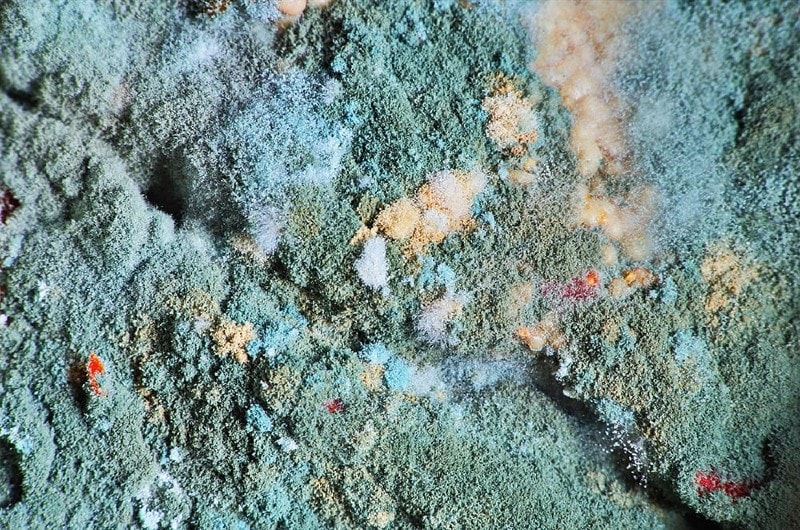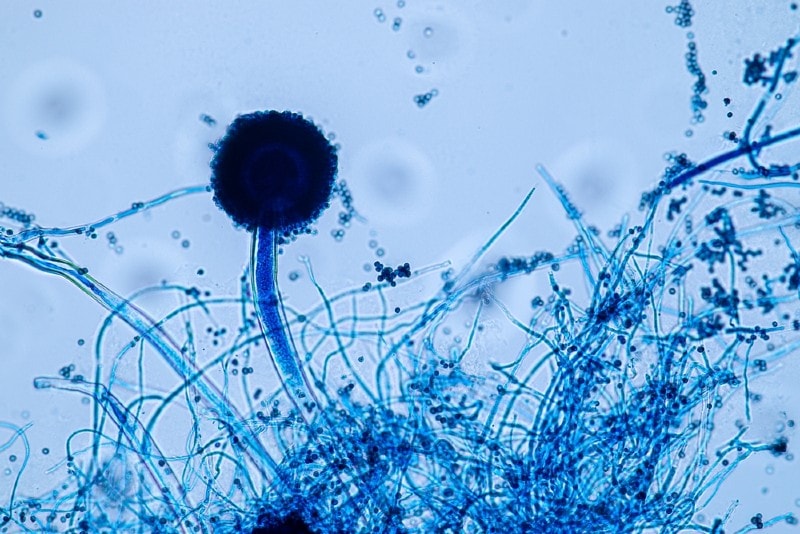What Does Mold Look Like Under a Microscope? Facts, Types & Tips
Last Updated on

One of the top ways to determine if mold is present on a property is to look under a microscope. The appearance of the mold will differ heavily based on the type of mold that is present. More so, mold that is grown in a laboratory tends to have a different appearance than mold grown out on its own.
As such, mold can take on many different appearances. You will have to consider the type of mold spore to estimate what the mold will look like under a microscope. Below, learn about what top mold varieties look like under a microscope and how to check for mold using a microscope.

What Do Mold Spores Look Like Under a Microscope?
To the naked eye, most mold looks similar. However, a closer inspection of mold tells us that the different mold varieties vary in appearance and structure. As such, there’s no singular predicted look of mold. You have to predict what mold will look like based on the species at hand.
With that in mind, here is how popular varieties of mold look under a microscope:
- Acremonium-like Mold Spore: Round, fuzzy-like
- Agrocybe: Oval with a thick outer layer
- Alternaria: Tadpole-like, similar to human skin under a microscope
- Arthrinium: Lemon-shaped
- Aspergillus: Difficult to see, round, colorless, can appear in chains
- Aureobasidium pullulans: Looks like pea pods
- Ceratocystis/Ophistoma: Black, bulbous end with small hair-like fragments
- Chaetomium: Oval, seed-like appearance
- Cladosporium: Dark scarring, round
- Curvularia: Attachment scars
- Drechslera: Large, segmented like an Earthworm
- Epicoccum: Large, segmented, rounder than Drechslera sp.
- Fuglio septica: Droplets that connect into interlocking pieces
- Ganoderma sp.: Small, near-perfect circles
- Cladobotryum: Often found on top of other fungi, oblong
- Meruliporia Incrassata: Small ovals
- Nigrospora: Black, almost perfectly round
- Oidium: No color, clear edge
- Periconia: Perfect circle, fuzzy edges
- Puffball: Hyphal stem attachments that look like mini balloons
- Smut: Similar to Puffball but fuzzier
- Stachybotrys: Black, look like tiny mice droppings
- Torula: Segmented ovals, near circle segments
As you can see, mold takes on many appearances and shapes under a microscope. Though most take on a rounded form, the exact form varies widely.

How Do You Check for Mold Under a Microscope?
If you want to see mold under a microscope, there are some things you will need and need to do.
- Glass slide
- Coverslip
- Water or Shear’s mounting medium
- Gloves
- Dropper
- Microscope
- Specimen
- Methylene blue solution
Once you have everything you need, place a single drop of water on the glass slide right in the center. Add the specimen to the drop of water and add a coverslip over this slide. If you lay this slip at an angle, it will remove the air bubbles. Be sure to lay the slip down gently too.
Start viewing the mold by putting the glass under your microscope and gradually increase power until you can see the specimen.
If you’re having trouble seeing the specimen, you can add a drop of methylene blue solution. This blue solution simply enhances visibility.

Conclusion
Mold takes on many forms, which means it takes on many shapes. This explains why there is no one-size-fits-all explanation about how mold looks under a microscope. To get a better idea of what mold will look like under a microscope, it’s best to know what type of mold you are dealing with.
- You Might Also Be Interested In: What is a Scanning Electron Microscope?
Featured Image Credit: Olpo, Shutterstock
About the Author Robert Sparks
Robert’s obsession with all things optical started early in life, when his optician father would bring home prototypes for Robert to play with. Nowadays, Robert is dedicated to helping others find the right optics for their needs. His hobbies include astronomy, astrophysics, and model building. Originally from Newark, NJ, he resides in Santa Fe, New Mexico, where the nighttime skies are filled with glittering stars.
Related Articles:
How to Clean a Refractor Telescope: Step-by-Step Guide
How to Clean a Telescope Eyepiece: Step-by-Step Guide
How to Clean a Rifle Scope: 8 Expert Tips
Monocular vs Telescope: Differences Explained (With Pictures)
What Is a Monocular Used For? 8 Common Functions
How to Clean a Telescope Mirror: 8 Expert Tips
Brightfield vs Phase Contrast Microscopy: The Differences Explained
SkyCamHD Drone Review: Pros, Cons, FAQ, & Verdict
